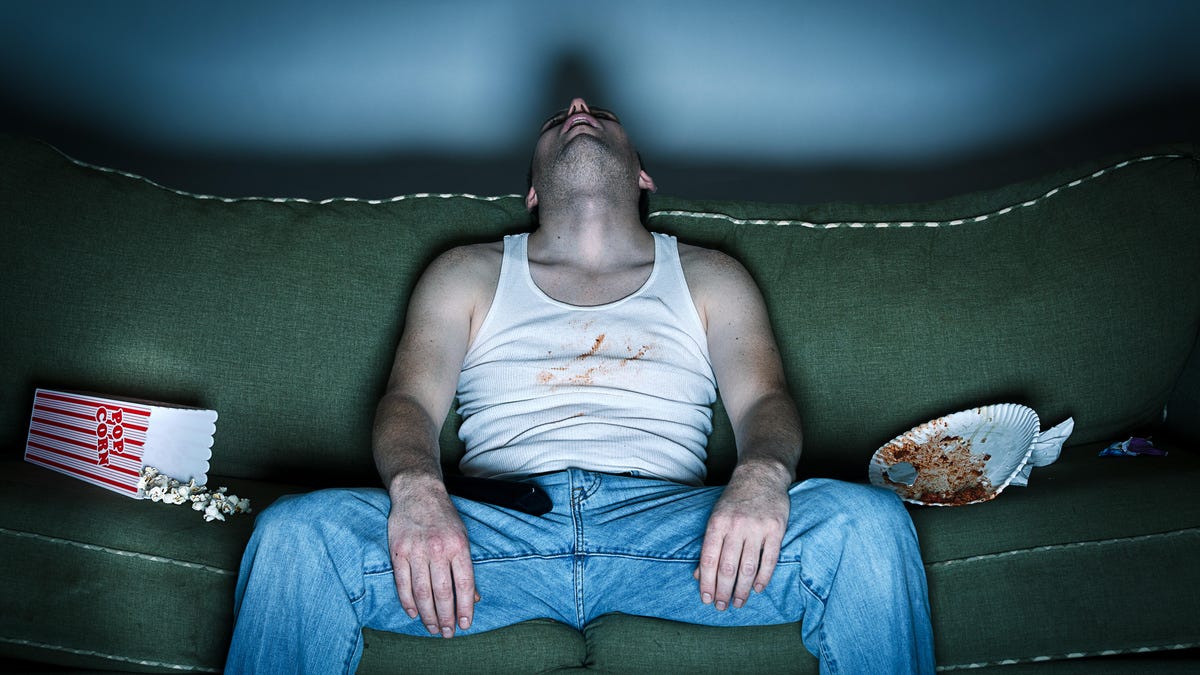Lockdown is making us TV zombies who watch news and sad shows all the time
Comcast data holds a mirror up to our binge-watching, reclusive existence during the coronavirus pandemic.

Coronavirus isolation is changing our TV habits.
Comcast, the biggest cable provider in the US, crunched the numbers on our TV habits during coronavirus lockdown, and the results are in: You're not the only one binge-watching news and depressing dramas like a screen zombie when you're supposed to be working or sleeping.
The coronavirus, which causes the respiratory disease COVID-19, has disrupted our TV and video habits. The virus has prompted stay-at-home orders and unprecedented shutdowns of entertainment gatherings like movies, concerts and sports, trapping millions of people at home and leaving them to entertain themselves.
Comcast, which operates the Xfinity cable service, pulled together data on how people are watching video lately on its services for live TV, on-demand programming, DVR and streaming video. Comcast also factored in the kinds of things people are asking for with voice commands.
The findings may sound familiar.
- A workday worth of extra TV
We're watching more than eight extra hours of TV and video each week compared with early March, according to Comcast data. The average household watched about 66 hours in the week of April 26, up from 57 hours in the week of March 8.
- Days blur together
That feeling of every day seeming the same as the one before is manifesting in daily TV trends too.
Typically, viewing behaviors are distinct on weekends and weekdays -- people tend to watch far more on the weekends than weekdays, and weekends are also usually a time that people take a break from their DVRs to watch more on-demand content, including renting or purchasing movies.
But since the onset of COVID-19 preventative measures, that behavior has blurred. Weekdays are seeing viewing levels and trends more like the weekend. Though Sunday remains the most popular day to watch television, Monday has overtaken Saturday's No. 2 spot.
The finding backs up what other services have reported, such as YouTube seeing less of a difference between weekends and weekdays in its viewership trends too.
- Binge at night, sleep in late
Comcast reported a 40% upswing in viewing during the late-night hours compared with a year ago. The largest increases are happening between 11 p.m. and 2 a.m. And with a 6% decrease in viewing during the hours of 6 a.m. to 8 a.m., trends suggest we're staying up late to binge watch and possibly sleeping in afterward.
- No escape to light-hearted romps
You might think that in the middle of a crisis we'd be seeking solace in lighter content. Instead, we're watching more heavy shows. Dramas are always the most popular genre normally, but their share of TV viewing has expanded since a year earlier, rising three percentage points to 30%.
- Devouring news
News viewing has soared as people try to wrap their heads around the extraordinary state of the world. Consumption of news programming has jumped 64% from a year earlier, hitting a peak in the week of March 30.
- Thank you. Next.
Customers appear to have made it through their TV backlogs and are craving new content. DVR usage has started to decline, while Comcast has seen a 50% jump in video on demand alongside double-digit percentage increases in discovery-related voice commands, like "what to watch" and "surprise me."

